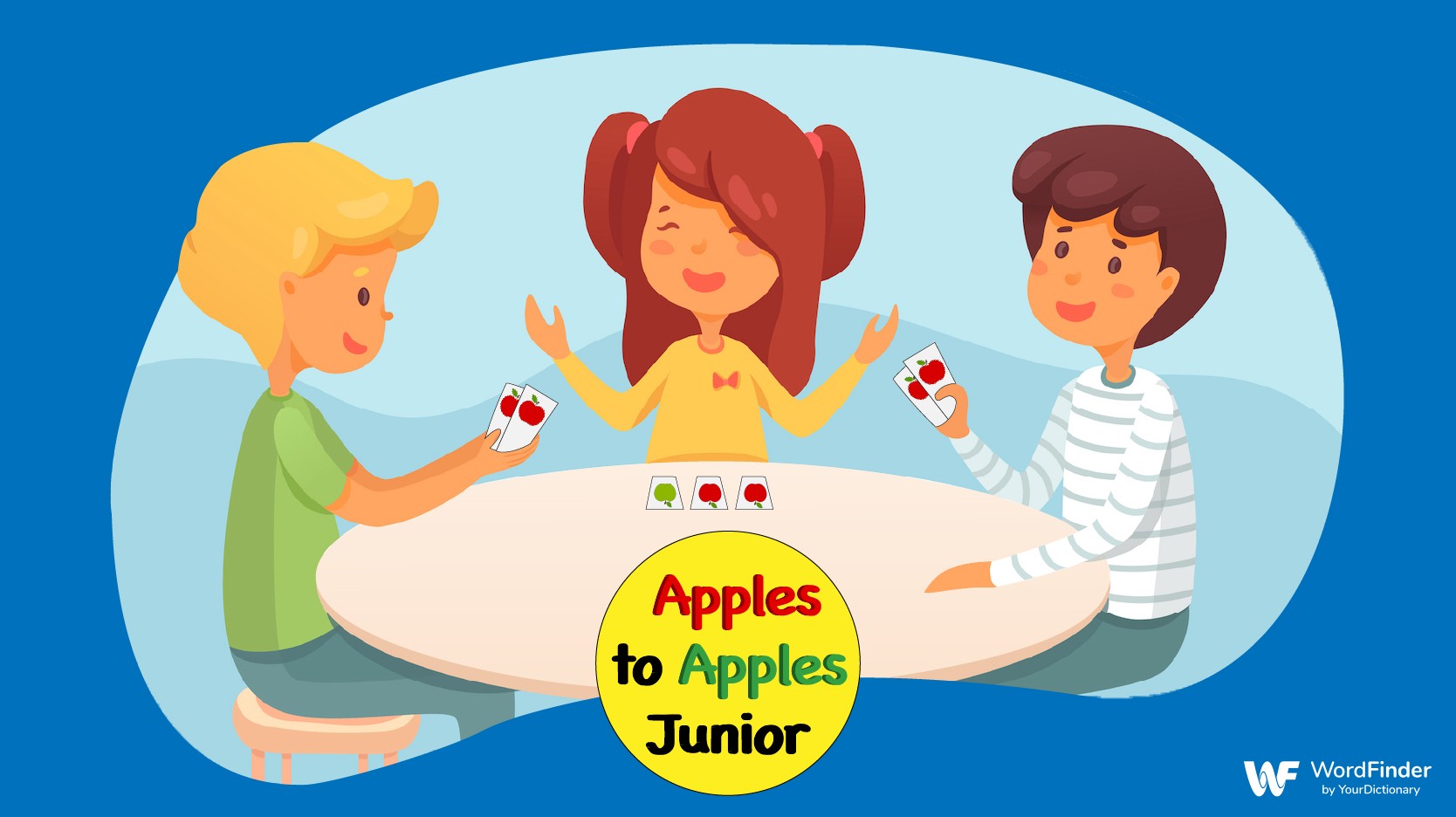Apples to Apples Junior Rules to Know
Apples to Apples Junior is nearly identical to the original Apples to Apples that it is based on. It has a simple premise and only uses two main game pieces.
The difference between the two games is that Apples to Apples Junior caters more to younger players. The main way it does this is by using Apple Cards with simpler and more age-appropriate topics. The instructions for Apples to Apples Junior remain much the same as the original game.
Simple Apples to Apples Junior Instructions
Learning the basics of Apples to Apples Junior rules takes only a few moments. If you’ve played the regular, non-junior game before, you’re already good to go. This simplicity is one of the many reasons why Apples to Apples Junior is a perfect game for kids.
All players start with five Red Apple cards.
The judge reveals the prompt on a Green Apple card to the other players.
Players submit a Red Apple card that they believe best matches the prompt.
The judge picks the best answer and awards the Green Apple card to the player who submitted it.
Every player draws a new Red Apple card to replace the one they used in the previous round.
Players take turns being the judge for subsequent rounds.
Once someone wins four Green Apple cards, they win the game.
Apples to Apples Junior is for four to eight players, and is appropriate for ages 9 and up.
Green Apple Cards With Prompts
Just like in the original game, Apples to Apples Junior uses two different cards. Each Green Apple card has an adjective printed on it. These include simple words like “Cool,” “Smelly” and “Goofy.”
The judge plays one Green Apple card at the start of a round. They reveal it to everyone and place it where everyone can see it. From there, the rest of the players need to submit one of their Red Apple cards that they think matches the adjective on the Green Apple card. There's no need to find words or unscramble letters.
Apples to Apples Junior comes with 72 Green Apple cards.
Red Apple Cards With Answers
Red Apple cards are the player cards, just like they are in the regular Apples to Apples game. These cards feature a noun with a description of that noun. “Monkey” is an example of the type of noun you might find on a card. It’s a simple noun for kids, and its description is also informative and kid-friendly: “Monkeys are playful, intelligent mammals. They just love monkeying around!”
Players choose one of their Red Apple cards and place it face down next to the Green Apple card that the judge plays. Typically, the best option is to play a noun that closely relates to the Green Apple card’s adjective.
Apples to Apples Junior comes with 378 Red Apple cards.
How Many Points Does It Take to Win?
As stated earlier, playing and winning a game of Apples to Apples Junior is simpler than winning in the original Apples to Apples. The first person to claim four Green Apple Cards wins the game.
This is one of the most important Apples to Apples Junior rules to remember if you are coming from the original. Unlike the original game, the number of Green Apple Cards you need to win does not change depending on the number of players. Whether there are four or eight people playing, the winning number is still four. This means that games with fewer players tend to go much faster.
Picking the Winning Apple Card
Playing Apples to Apples Junior will teach young players valuable lessons about how to use their reasoning skills. This is because the judge chooses the winning Red Apple card based on their personal opinion. Younger players need to determine which card makes the most sense as a correct answer. But, an equally important factor is knowing which card the judge will like the most.
The kids playing need to know the judge’s personality. They will need to understand that their own reasoning might differ from the person making the ultimate decision. In this sense, playing Apples to Apples Junior is a great way to learn about social interaction and understanding people.
Boggle Young Minds With Boggle Jr.
Apples to Apples Junior lets older kids have fun. But, it’s still a bit much for children who are only starting to learn their letters and how they go together. If you want a fun game for younger children and early learners, take a look at Boggle Jr. This stress-free game can teach your kids the essentials of reading and word association while also entertaining them.
Zac Pricener has been a content creator for the past eight years. He’s a bit of an all-around nerd, and he has a bad habit of working movie and TV show references into conversations whenever possible.
